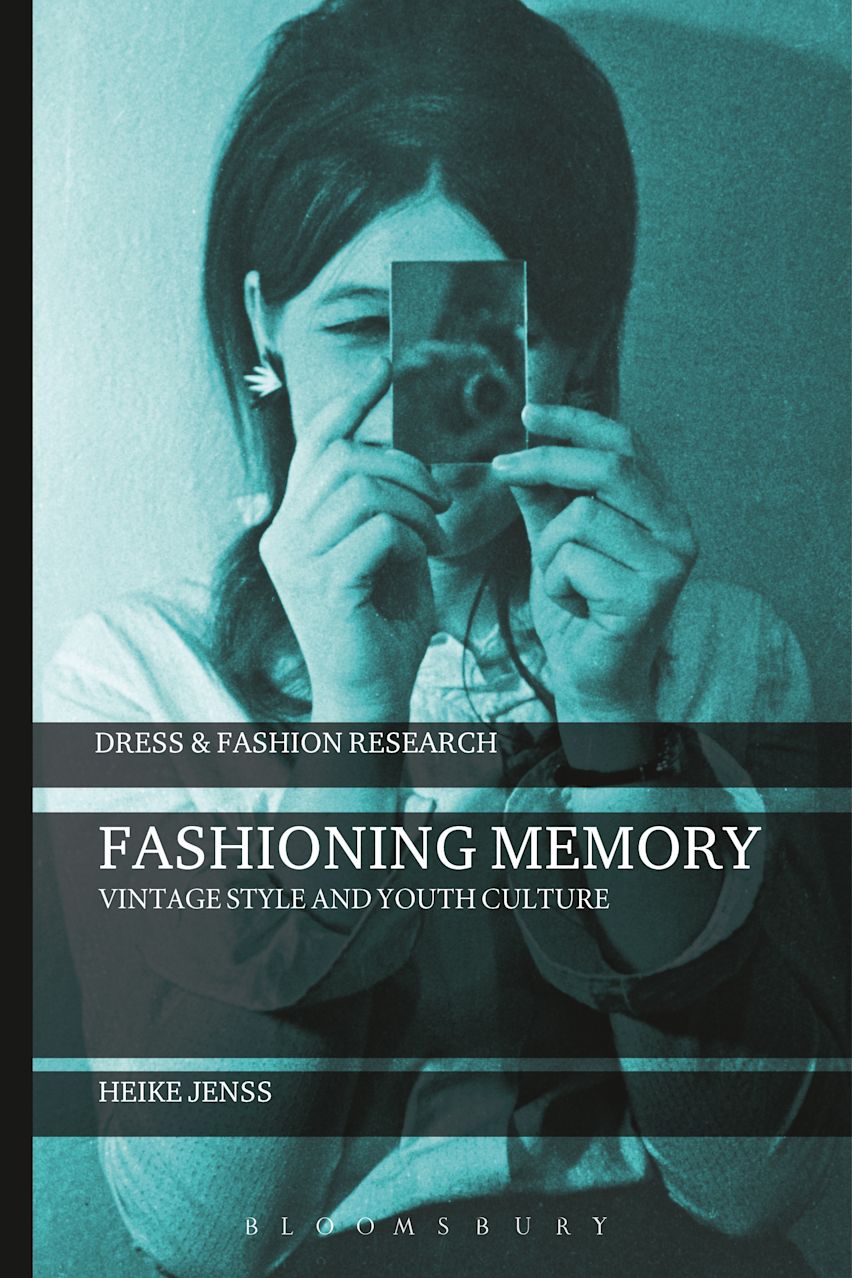Share
Business Operations of a Vintage Clothing Store

Table of Contents
- Introduction to Vintage Clothing Stores
- Historical Overview of Vintage Fashion
- Key Features of Successful Vintage Clothing Stores
- Understanding the Mission of Vintage Clothing Stores
- Business Operations in Vintage Clothing Stores
- Marketing Strategies Adopted by Vintage Clothing Stores
- Challenges Faced by Vintage Clothing Stores
- Customer Experience in Vintage Clothing Stores
- The Role of Sustainability in Vintage Clothing Stores
- The Future Prospects for Vintage Clothing Stores
Introduction to Vintage Clothing Stores
Vintage clothing stores have long captured the imagination of those seeking unique fashion pieces and sustainable shopping alternatives (Cervellon et al., 2012).
These stores specialize in curating and selling garments from previous decades, offering customers the charm and individuality of second-hand fashion.
By focusing on pre-loved clothing, vintage stores cater to consumers who value style and history in their wardrobe (DeLong et al., 2005).
Unlike standard retail stores, vintage shops provide a treasure-hunting experience.
Each visit reveals items from different eras, highlighting the shifts in design and culture over time.
Customers are drawn to these shops for various reasons, including affordability, a love for nostalgia, or the desire to make sustainable contributions to the environment (Xu et al., 2014).
As the demand for unique, high-quality fashion grows, vintage clothing stores are becoming an essential segment in the sustainable fashion industry.
They blend creativity with practicality, serving as hubs for both fashion enthusiasts and environmentally conscious shoppers (Cassidy and Bennett, 2012).
Whether styled as quirky boutiques or minimalist spaces, these shops bring a distinct aesthetic that embodies their purpose and mission.
Overall, vintage clothing stores are more than just places to shop; they serve as cultural landmarks and sustainable solutions in today’s fast fashion-dominated world (Reiley and DeLong, 2011).
Their role goes beyond commerce, as they help preserve the stories behind the garments and promote mindful consumption.
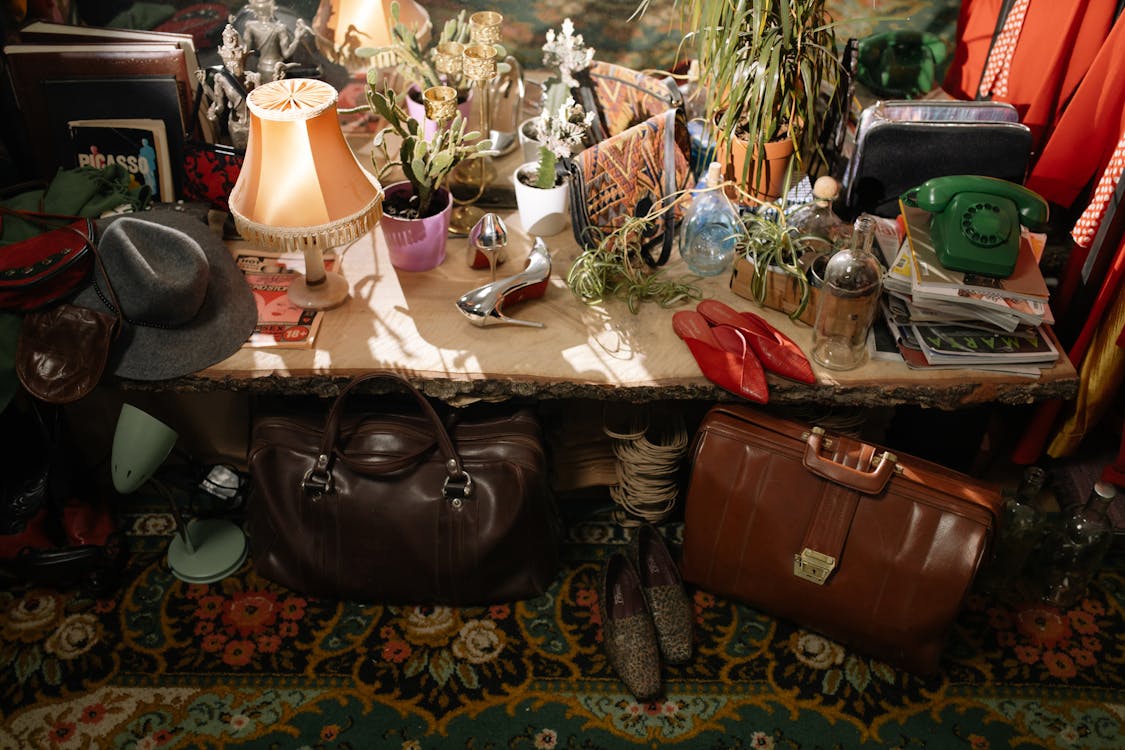
Historical Overview of Vintage Fashion
To truly grasp the purpose behind vintage clothing stores, it’s essential to understand the evolution of vintage fashion itself.
The concept of wearing pre-loved clothing dates back centuries when clothing was often repurposed out of necessity.
However, it wasn’t until the mid-20th century that the idea of vintage fashion gained momentum in popular culture (Fischer, 2015).
The hippie movement of the 1960s brought a renewed appreciation for older styles, with individuals adopting second-hand fashion as a rebellion against mainstream consumerism (Jenss, 2015).
--
-
Book Recommendation: Fashioning Memory by Heike Jenss
This era saw bell-bottom pants, embroidered dresses, and denim jackets emerge from thrift stores and make their way into everyday wardrobes.
In the 1980s and 1990s, vintage fashion took on a chic new identity, with celebrities and subcultures embracing it as a means of breaking away from traditional fashion norms (Palmer and Clark, 2004).
Think Madonna popularizing second-hand corset-like outfits or bands sporting vintage concert tees.
By this time, vintage clothing was no longer associated solely with economic necessity but became a statement of individuality.
Today, vintage fashion continues to be celebrated for its timelessness and quality.
Influencers, designers, and trendsetters often incorporate retro styles into modern collections (Veenstra and Kuipers, 2013).
The history of vintage fashion reminds us that clothing can carry a narrative, making vintage pieces not just purchases, but meaningful connections to the past.

Key Features of Successful Vintage Clothing Stores
Not all vintage clothing stores are created equal; some stand out due to their unique approach to curation, customer service, and branding.
Here are the key features that contribute to the success of a thriving vintage shop:

1. Thoughtfully Curated Inventory
The most successful vintage stores take the time to handpick pieces that reflect their aesthetic vision (Williams & Quinn, 2010).
They strike a balance between variety and cohesion, ensuring shoppers have access to items from distinct eras while maintaining a consistent quality.
Whether offering iconic Levi’s jeans or intricate 1970s dresses, curation makes all the difference.

2. Community Engagement
Vintage stores that immerse themselves in their local communities foster loyalty and repeat customers (Brown, 2014).
Some host pop-up events, styling workshops, or collaborations with local artists. Establishing these connections creates a sense of belonging among shoppers.

3. Exceptional Customer Service
Customer experience is a cornerstone of any business, and vintage retailers excel when staff are knowledgeable about the history of fashion and helpful with styling advice (Pine & Gilmore, 1999).
Visitors who receive tailored guidance are more likely to spread the word about the store's professionalism.

4. Aesthetic Design & Presentation
From window displays to the layout of shelving units, the appearance of a vintage store matters immensely (Underhill, 2008).
A well-arranged space invites shoppers to browse comfortably and transforms their visit into an enjoyable experience reminiscent of exploring a museum.

Understanding the Mission of Vintage Clothing Stores
At the heart of every vintage clothing store lies a mission steeped in sustainability, creativity, and community.
Their overarching goal is much deeper than simply selling second-hand fashion—it’s about bringing value, purpose, and responsibility to consumer habits (Fletcher, 2012).
One of the core missions revolves around environmental impact.
By rescuing pre-worn garments and reselling them, vintage shops mitigate waste and reduce the demand for new clothing production.
This aligns perfectly with global efforts to combat the damaging effects of fast fashion (Joy et al., 2012).
Creativity also infuses their mission.
Vintage clothing stores embrace the artistry of fashion by celebrating individual expression.
Each piece carries a unique backstory, allowing customers to craft a wardrobe that feels genuine and authentic to them.
Vintage fashion empowers people to step out of trends and embrace what resonates personally.
Finally, many vintage stores act as educators, raising awareness about ethical consumption and the value of quality craftsmanship.
Their mission often encourages shoppers to rethink their relationship with clothing and support sustainable options.

Business Operations in Vintage Clothing Stores
The day-to-day business operations of a vintage clothing store are both challenging and rewarding.
Owners and staff must skillfully manage sourcing, organization, sales, and customer engagement to ensure the business runs smoothly (Kotler & Armstrong, 2016).
On a basic level, inventory sourcing becomes a critical aspect of daily operations.
Store owners may collaborate with wholesalers, scout thrift shops, or attend estate sales to find unique pieces.
For instance, purchasing bulk items like Levi's Jeans Second Hand Wholesale Vintage Bulk for Sellers Men's (5-100 Qty) helps maintain inventory consistency.
Organizing the store is another significant aspect.
Employees spend time cleaning, categorizing, and pricing items to ensure products are presentable and easy to shop.
Some stores even add minor repairs to damaged clothing before putting it up for sale.
Sales, both in-store and online, form the backbone of operations.
Many vintage shops now utilize eCommerce platforms to reach broader audiences.
Engaging with customers and curating displays digitally offers modern conveniences that align with changing shopping trends (Evans & Bridson, 2005).
Finally, engaging with customers—whether by providing outfit suggestions or sharing anecdotes about an item’s history—is essential to daily operations.
Staff must strike a balance between commerce and connection, fostering an atmosphere of curiosity and care.
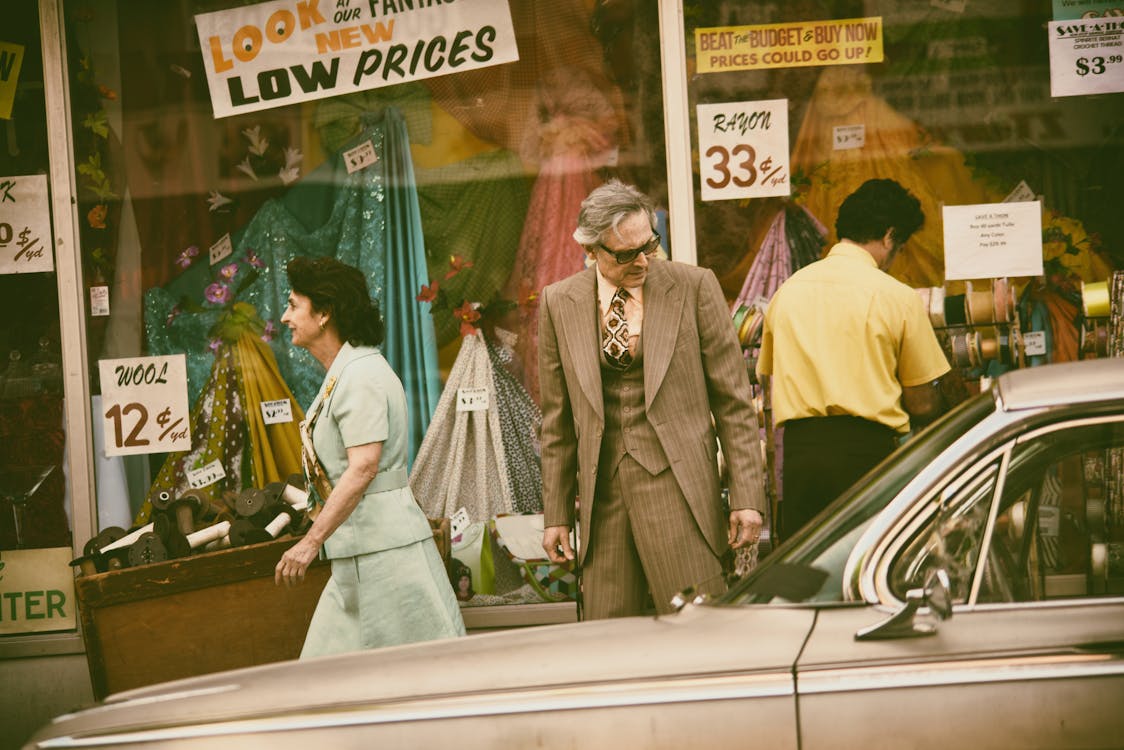
Marketing Strategies Adopted by Vintage Clothing Stores
With a niche audience to cater to, vintage clothing stores turn to creative marketing strategies to build their brand and attract customers (Keller, 2013).
Here’s how they stand out in a competitive marketplace:
1. Social Media Campaigns
Platforms like Instagram and Pinterest are ideal for showcasing the visual appeal of vintage pieces.
Stores often post styled shoots featuring unique items or create reels explaining the historical significance of certain fashions to capture their audience’s attention.
2. Collaborative Events
Hosting collaboration events such as swaps, open mic nights, or vintage fashion shows brings the local community together.
These events enhance visibility and connect vintage stores with their target demographic.
3. Storytelling
Effective marketing often involves sharing the background of garments.
Some vintage shops interview previous owners or provide details about era-specific designs.
This storytelling approach adds emotional value to pieces and draws in customers.
4. Strategic Partnerships
Many retailers establish wholesale partnerships to maintain a steady inventory, such as ordering Levi's Jeans Second Hand Wholesale Bulk for Sellers Women's (Qty 5-100).
These bulk purchases ensure availability while helping shops run strategic promotions.
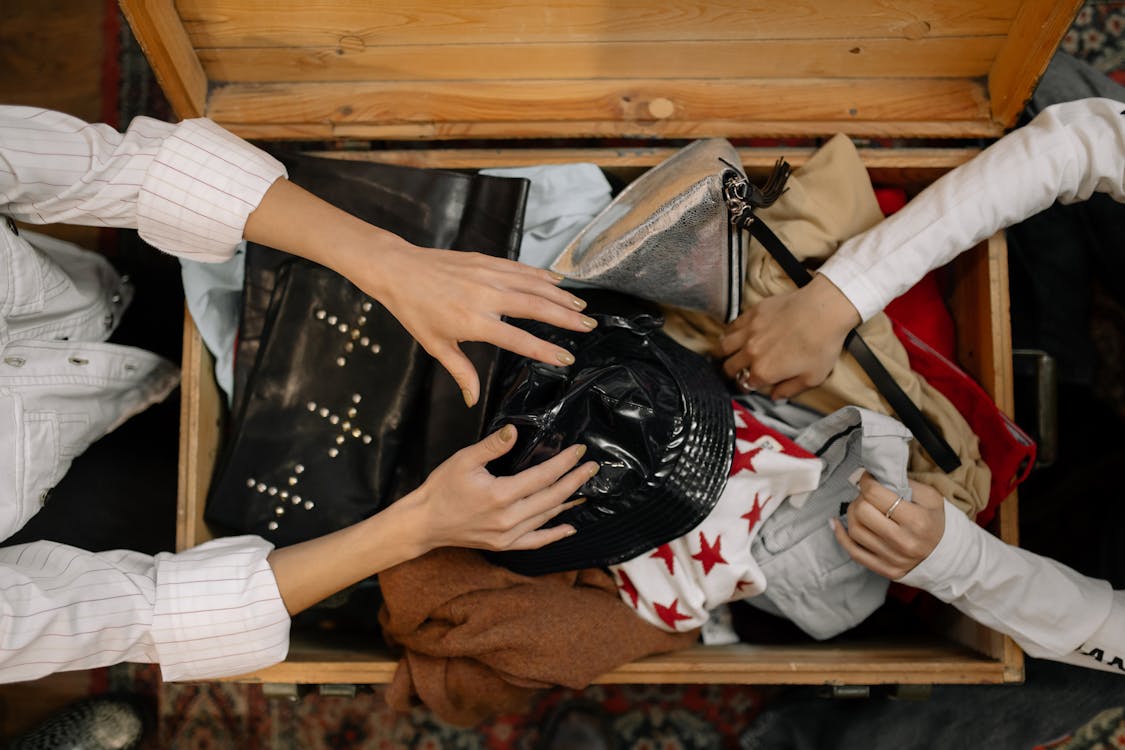
Challenges Faced by Vintage Clothing Stores
Despite their popularity, vintage clothing stores face several challenges that stem from operational, economic, and societal factors.
Understanding these obstacles sheds light on what keeps vintage businesses unique yet demanding.
An ever-changing inventory is a constant challenge.
Sourcing quality second-hand fashion items can be unpredictable, as the supply depends on availability from private sellers, estate sales, or wholesalers.
Striking a balance between variety and excess stock becomes a juggling act for many store owners.
Pricing is another tough factor
Determining a fair price for vintage items—a price reflective of their rarity, condition, and historical value—requires expertise.
Pricing too high risks alienating customers, while setting prices too low can undervalue the piece.
Additionally, vintage stores often operate on narrow profit margins.
Costs associated with acquiring, restoring, and marketing vintage merchandise cut into the bottom line.
Investing in promotions and in-store upgrades becomes limited without a steady flow of revenue.
Lastly, competition from fast fashion and large-scale second-hand retailers creates external pressure.
To remain competitive, vintage stores must differentiate themselves through exceptional service and carefully curated collections.

Customer Experience in Vintage Clothing Stores
Customer experience is the heart of a successful vintage clothing store.
Unlike conventional shopping destinations, vintage shops require a highly engaging and interactive approach to meet customer expectations.
The thrill of discovery is arguably the most enjoyable aspect of visiting a vintage store.
Customers relish the opportunity to explore racks of varied clothing, uncovering hidden gems like an original pair of Levi’s or a retro leather jacket.
This element of surprise and exclusivity boosts satisfaction.
Store owners and employees play a crucial role in shaping the experience (Schmitt, 1999).
For example, a knowledgeable staff member can explain why a specific blouse represents 1950s fashion.
This adds depth to the customer’s shopping journey, making it feel both personal and enriching.
Moreover, vintage store shoppers often appreciate a hands-on experience.
Many stores have fitting rooms tailored to make trying-on clothes comfortable and stylish.
Displays designed with nostalgic aesthetics transport visitors to a bygone era, enhancing their emotional connection to the collection.
Lastly, digital channels have transformed aspects of customer experience.
Online vintage stores allow global shoppers to access unique items while offering diverse sizing charts, detailed descriptions, and easy checkout systems to complement their in-person services.
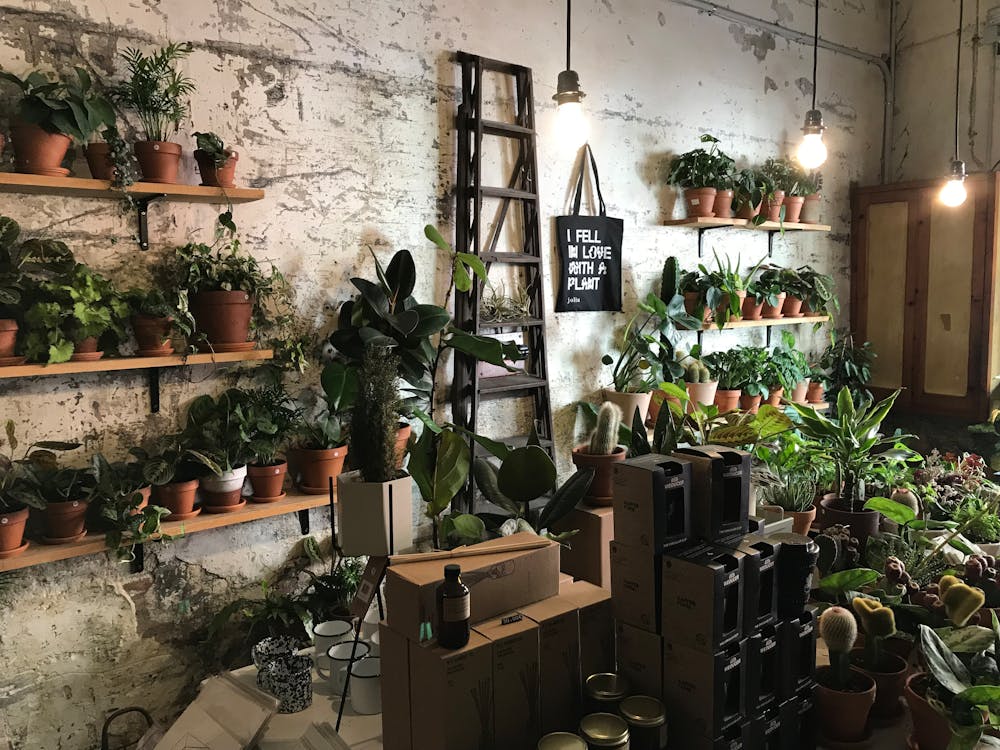
The Role of Sustainability in Vintage Clothing Stores
As awareness around environmental issues continues to grow, sustainability has become a cornerstone of vintage clothing store operations.
These businesses provide an eco-friendly alternative to fast fashion by actively reducing waste and extending the lifecycle of garments (Gwilt & Rissanen, 2011).
One way vintage stores contribute to sustainability is by highlighting the benefits of buying second-hand fashion.
Customers purchasing pre-owned items decrease the demand for new clothing production, which often involves resource-intensive processes like water consumption and chemical dyes.
Stores also help combat the global issue of textile waste.
Clothes that might otherwise end up in landfills are given a second life, often restored to their original beauty.
By encouraging this mindset, vintage retailers inspire a shift toward more circular consumption habits.
Additionally, sustainability efforts often extend to operational practices.
Many vintage shops avoid packaging waste by using minimal or recyclable materials.
They may also partner with ethical suppliers to source inventory.
Sustainability runs deep in the ethos of vintage stores.
By blending financial feasibility with environmental consciousness, these retailers position themselves as champions of ethical fashion.

The Future Prospects for Vintage Clothing Stores
The future of vintage clothing stores looks bright as more consumers turn to second-hand fashion for its meaningful impact and expressive potential.
However, these businesses will also need to adapt to evolving trends and technological advancements to maintain their relevance.
One significant opportunity lies in the digital transformation of vintage retail.
Online platforms and apps dedicated to vintage fashion are gaining popularity, enabling stores to reach a broader audience.
Enhanced virtual styling tools and augmented reality fittings could further elevate the digital shopping experience.
Another area for growth is collaboration.
Partnering with fashion designers to reimagine vintage clothes into modern pieces can attract younger generations.
These creative ventures allow stores to double down on their mission of waste reduction and creative expression.
Moreover, the vintage market will likely be influenced by further support for sustainability initiatives.
Whether through tax benefits for ethical practices or stricter regulations on textile production, the shift toward conscious shopping will amplify the demand for vintage shops.
In conclusion, vintage clothing stores are poised for sustained success—and even growth—if they innovate and stay true to their mission.
For those passionate about style with substance, there’s no better time to explore what these timeless shops have to offer.
References
Cassidy, T.D. and Bennett, H.R., 2012. The rise of vintage fashion and the vintage consumer. Fashion Practice, 4(2), pp.239-261.
Cervellon, M.C., Carey, L. and Harms, T., 2012. Something old, something used: Determinants of women's purchase of vintage fashion vs second‐hand fashion. International Journal of Retail & Distribution Management, 40(12), pp.956-974.
DeLong, M., Heinemann, B. and Reiley, K., 2005. Hooked on vintage! Fashion Theory, 9(1), pp.23-42.
Fischer, N.L., 2015. Vintage, the first 40 years: The emergence and persistence of vintage style in the United States. Culture Unbound, 7(1), pp.45-66.
Jenss, H., 2015. Fashioning memory: Vintage style and youth culture. Bloomsbury Publishing.
Palmer, A. and Clark, H. eds., 2005. Old clothes, new looks: Second hand fashion. Berg Publishers.
Reiley, K. and DeLong, M., 2011. A consumer vision for sustainable fashion practice. Fashion Practice, 3(1), pp.63-83.
Veenstra, A. and Kuipers, G., 2013. It is not old‐fashioned, it is vintage, vintage fashion and the complexities of 21st century consumption practices. Sociology Compass, 7(5), pp.355-365.
Xu, Y., Chen, Y., Burman, R. and Zhao, H., 2014. Second-hand clothing consumption: A cross-cultural comparison between American and Chinese young consumers. International Journal of Consumer Studies, 38(6), pp.670-677.


